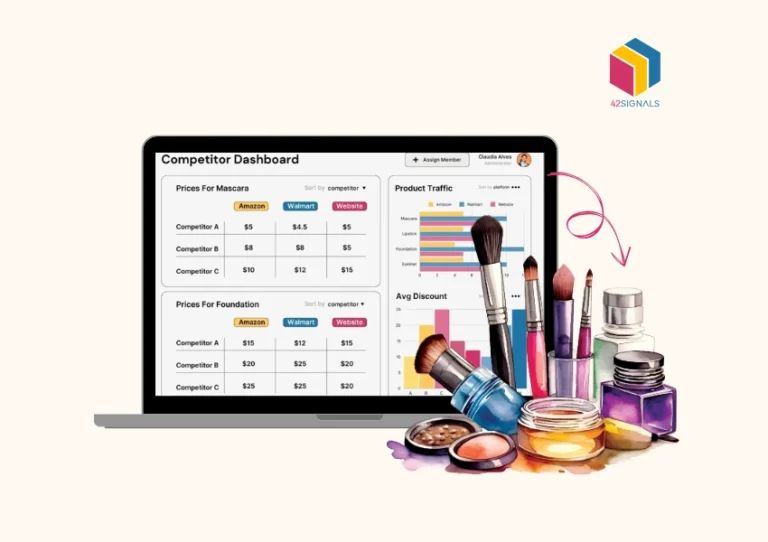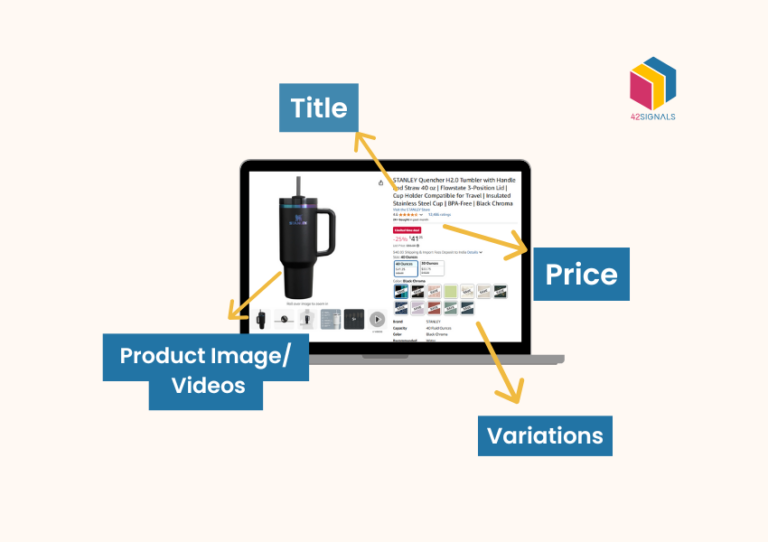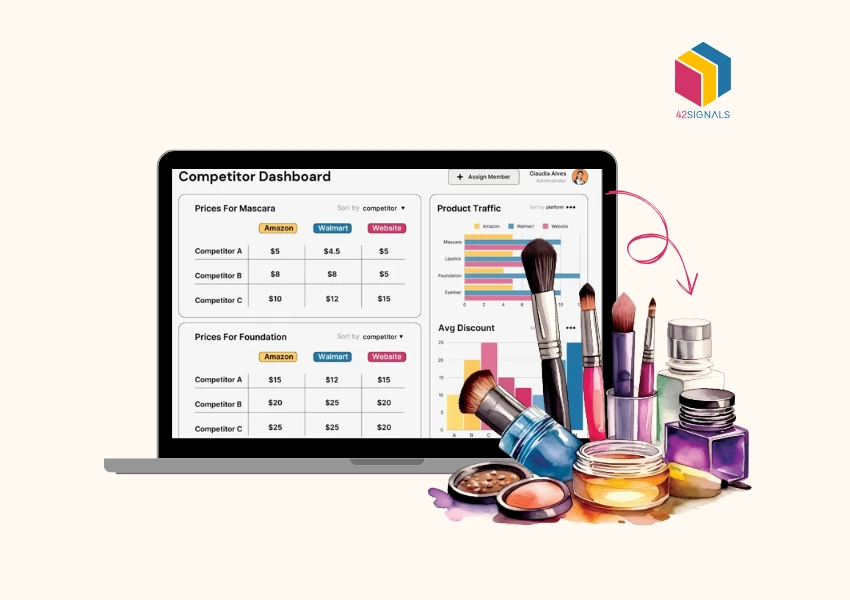What is Category Management
Category Management is a process commonly used in retail and eCommerce industries, where similar products are grouped together into separate categories to streamline their performance management. It involves organizing and optimizing the product assortment, pricing, promotions, and placement of products within a category to maximize sales and profitability.
As businesses expand and begin to offer thousands of SKUs across various product departments, a designated team member, typically a category manager, is assigned to oversee the performance and return on investment of their respective category manually, or with the help of retail analytics tools such as 42Signals that can help category managers with digital shelf analytics.
The goal of category management is to provide a better shopping experience for customers by making it easier for them to find what they are looking for and to increase sales by strategically placing products and optimizing their pricing and promotions.
It also involves monitoring and measuring the performance of each category and making adjustments as necessary to continually improve sales and profitability. This practice is frequently utilized by large retailers, including grocery stores, furniture stores, smartphone companies, and major eCommerce companies like Amazon.
Benefits of Category Management
There are several benefits of category management, including:
Improved customer experience
If products are organized into logical and easy-to-navigate categories, customers can quickly find what they are looking for and have a better overall shopping experience.
Increased sales and revenue
Category management can help retailers increase sales and revenue within each category and across the entire store, by optimizing product assortments, pricing, and promotions.
Better inventory management
By analyzing sales data and forecasting demand, retailers can optimize inventory levels and reduce stockouts and overstocking, leading to improved profitability.
Improved operational efficiency
By keeping an eye on inventory levels, retailers can improve their operational efficiency and reduce costs associated with handling and storing excess inventory.
Better understanding of customer needs
Retailers can gain insights into customer needs and preferences, allowing them to tailor their product assortments and marketing efforts accordingly, by analyzing sales data and customer behavior.
Competitive advantage
Retailers can differentiate themselves from their competitors and gain a competitive advantage, by optimizing their product assortments and pricing strategies.
Greater agility
By regularly analyzing sales data of different categories and adjusting their product assortments and strategies accordingly, retailers can quickly adapt to changing market conditions and customer needs.
Category Management Process
Brian F. Harris’s 8-step Category Management Process also known as the Brian Harris Model, helps ecommerce companies implement an effective category management process that is adaptable to changing market conditions and customer preferences.
1. Define the Category
The first step is to define the product category and its role in the overall business strategy. This involves identifying the category’s scope, including which products and services are included, and analyzing market trends and customer needs to understand the demand for products within the category.
2. Assessing Category’s Role
Once the category has been defined, the next step is to assess its role in the overall business strategy. Including, analyzing the category’s impact on revenue, profitability, and customer satisfaction, as well as its alignment with the organization’s long-term goals.
3. Tracking the Performance
After the category’s role has been assessed, the next step is to track its performance using relevant metrics. This includes analyzing sales data, margins, inventory levels, and other relevant metrics to identify areas of strength and weakness.
4. Set Benchmarks
Based on the performance data, benchmarks should be set for key performance indicators (KPIs). This will help to establish performance targets and identify areas for improvement.
5. Plan Strategies
With the benchmarks in place, the next step is to devise strategies for improving the category’s performance. The 6 category management strategies include – Traffic Building, Transaction Building, Turf Defending, Profit Generating, Excitement Generating and Image Building.
6. Category Tactics
Once the strategies have been developed, specific tactics should be developed to execute the category strategy. This involves making product selection decisions, setting prices, and developing promotional activities.
7. Implementation
With the tactics in place, it’s time to implement the category management strategy. Including, putting the tactics into action, monitoring their performance, and making adjustments as needed.
8. Review
Finally, it’s important to continuously review the category management process to ensure that it remains aligned with business objectives and meets customer needs. This includes analyzing performance data, reviewing supplier relationships, and making adjustments to the overall strategy as needed.
How an eCommerce Analytics Tool Aids Category Management
An eCommerce analytics tool such as 42Signals can help with category management by providing insights into customer behavior, preferences, and product performance. These tools can track a variety of data points, such as sales, conversion rates, inventory levels, and customer reviews, to help category managers make informed decisions about their product assortment, pricing, and promotions and ultimately increase sales and customer satisfaction.
For example, let’s say a retailer is analyzing data on its smartphone category using an eCommerce analytics tool. The tool might show that the retailer’s top-selling smartphones are all in the mid-to-high price range, while the lower-priced smartphones have low conversion rates. Based on this data, the category manager might decide to adjust the product assortment to feature more mid-to-high-priced smartphones and reduce the number of low-priced options. They might also adjust the pricing and promotions to encourage customers to buy higher-priced smartphones.
The eCommerce analytics tool might also reveal that customers are searching for smartphones with specific features, such as long battery life or high-resolution cameras. The category manager could use this information to source smartphones with those features and promote them on the website and could use it to identify areas for improvement or new product opportunities.







